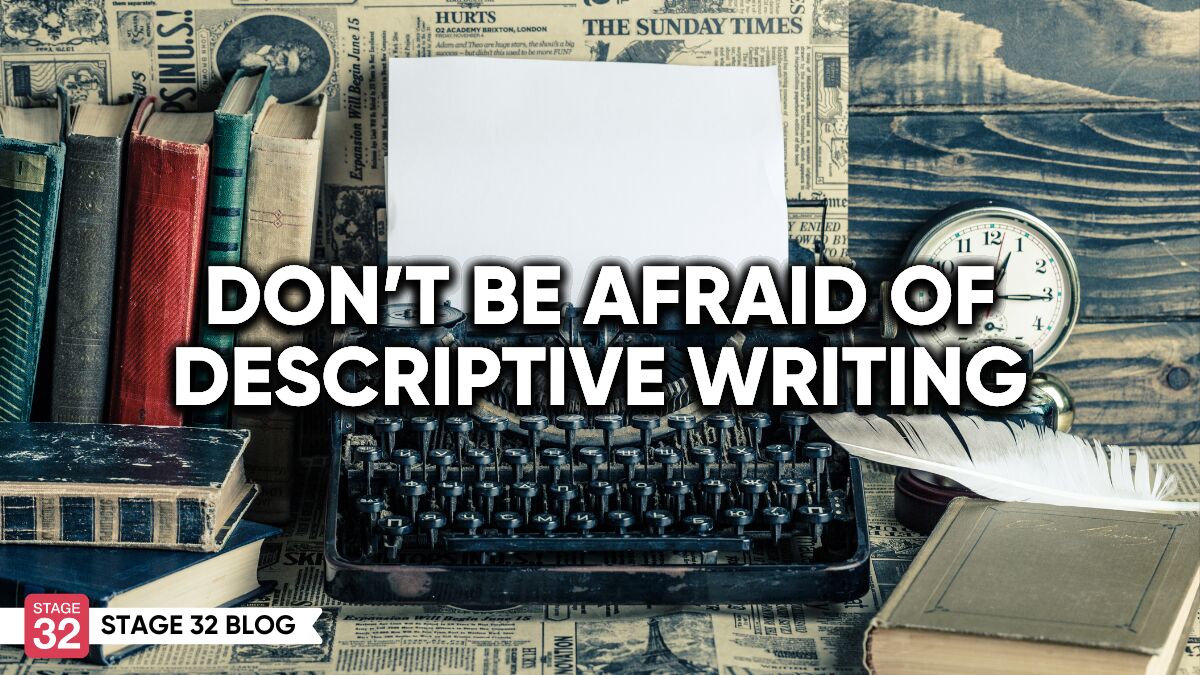Don't Be Afraid Of Descriptive Writing
This blog may be stating the obvious and I don't want to come across as condescending, but I just thought I would impart a piece of advice I gave to a client of mine.
I have found while doing my job as an editor, that I have a great responsibility, not just to the authors I work with, but to the work itself. It's not just about spelling and grammar, it is also about what is best for the story and looking at something from the point of view of the reader. I do know, of course, that authors think about the reader as well, but sometimes things get overlooked and writers' confidence, or sometimes the lack of it also comes into play.
I edited a wonderful YA novel and the author is a very talented writer, the story was great, the characters were believable, the pace of the story was spot on and her writing style was also great, but in the process of editing the story, I found myself wanting to add in a lot more description than the author had applied to her text and through this process, I got the feeling she was holding back and not writing to her full potential. When I asked her about it, she said she was worried that her young readers might get bored if there was too much description in the story.
I explained to my client that actually, the opposite is true, not enough description will bore readers more than too much and that this is where the 'art' of writing comes in, otherwise everyone would be doing it and making a success out of writing.

If there is too much description, it can always be edited down. I believe that whether it's a novel or a screenplay, you have to take the readers into the world you want to create, the world you want your readers to escape to and you have to give them plenty to visualize.
Imagine Gone With The Wind with not a lot of description, Harry Potter, or Alice In Wonderland with not a lot of description. These books and of course, millions of others, would not make it without plenty of description, so that we know where we are, what we are seeing, hearing and what the characters are feeling and thinking. Okay, the 'thinking' thing doesn't come into play so much in screenplays, but you get my meaning.
An example of what I mean is this, for example... if you wanted to talk about a little girl going into a playground, you could write it like this...
'The little girl played in the playground while her mum sat on a bench chatting'.
"What's wrong with that?" You might ask. Nothing really, I'm sure that in your readers' minds, they will be visualizing a little girl in a playground that they imagine. It could be a playground they knew as a child themselves, or that they know now if they have children of their own or they could make one up in their heads as they are reading it, but that is not taking you to where the little girl actually is, you have no idea what she is actually seeing or hearing, the reader is not really actually 'in' the same place the little girl is in, so you could write it like this...
"The little girl ran through the gated entrance to the park and down the path that was bordered by grass verges dotted with dandelions and buttercups. The path then opened up to reveal a playground where children were laughing and playing on all the equipment.
Mums, some with prams were diligently watching their respective children play and some sat on the benches that were placed strategically around the playground. The little girl's mum sat on one of the benches and started talking to another mum who had a little terrier dog on a lead. There was a huge slide that takes ages to climb up and seconds to slide down, a climbing frame with monkey bars that children were swinging across by hanging from the handles on the bar, one little boy's dad was walking next to him with his arms up, ready to catch the little boy if he lost his grip.
A see-saw that brought cries of glee and laughter from the children playing on it and of course, the swings.. two sets, one for very little ones with bars to stop them falling out and 'big swings', for older kids who compete to see who can go the highest, some even standing on the swings, trying to make them go higher and faster."

So although this is very descriptive for the purposes of a novel, this could be adapted in screenplay form as well.
So, now, we all know exactly what the little girl is doing, seeing, and hearing when she goes to the park and I think it adds great substance and depth to the text.
Another way to think about it is this... the 'happening' in the story is the 'heart' and descriptions are the 'arteries' that feed the heart and you have to keep that flowing in order for the 'heart' (the happening) to keep pumping. If you don't give your readers something to visualize, they could lose interest in the story and stop reading the book/screenplay.
Don't be afraid to let go when you write, don't hold back, nothing bad is going to happen. If anything, you're writing will be better and your confidence will grow when you take yourself out of your comfort zone when you write.
If you have an editor/advisor, they will tell you if something isn't right, or if it's too much. Make sure you expand your sentences and paragraphs, yes, of course, some things have to be left to the imagination, I understand that, but you can do that naturally when you write, for instance, in the paragraph above, you don't know what the conversation is between the mum and the lady with the dog, you don't know what color the playground equipment is or what any of the children are wearing or saying to each other, but you still get a visual of the scene and a sense of sound and the reader can fill in the blanks for themselves.
If you are a writer who has problems writing descriptive text when you read a book, take note of how the author has written descriptively, and notice when they have expanded on something and when they have not. You will see that there are times when the author wants you to use your imagination and other times they want you to 'see' exactly what the character sees.
As a writer, you are a communicator, so communicate, and show us what it is we should be seeing in a scene, as readers we want to 'feel' your passion as a writer and be excited by what we read.
Happy writing everyone.
Let's hear your thoughts in the comments below!
Got an idea for a post? Or have you collaborated with Stage 32 members to create a project? We'd love to hear about it. Email Emily at blog@stage32.com and let's get your post published!
Please help support your fellow Stage 32ers by sharing this on social. Check out the social media buttons at the top to share on Instagram @stage32 Twitter @stage32 Facebook @stage32 and LinkedIn @stage-32
| 4 Rules To Financially Protect Your Film With Indie Distributors |
| Stage 32 Certification Featured in Grit Daily |
Search Stage 32 Blog
There are now 4032 blog posts for you to enjoy. Search them all by tags below.
Acting, Advice, Cinematography, Coffee & Content, Composing, Contests, Distribution, Featured, Filmmaking, Financing, Inspirational, Networking, Producing, Screenwriting, Success Stories, Tips, Trending,Relevant Tags
Recommended Articles

Coffee & Content: Why Your Pitch Needs to Be Human

The Importance of Proper Script Formatting

Insider Intel: The Studio War & The Rise of Indies

A Practical Guide for Actors: Tips & Advice Every Performer Should Know

Coffee & Content: Why Your Next Step Matters More Than the Perfect Step

Making Our First No-Budget Feature: The Pure Vortex Production Chaos (Part 2)

November Write Club Week #3: How To Make A Strong First Impression When Meeting Execs, Producers, & Reps

Wearing Many Hats As A Creative

What Stage 32's Community Is Really About (Beyond Scripts, Sets, and Showreels)






